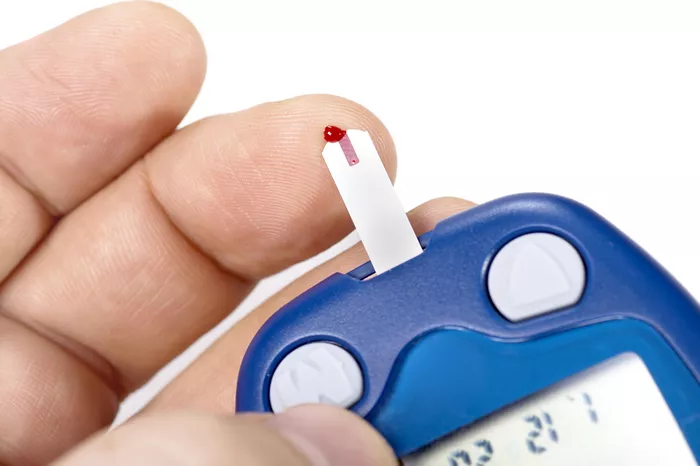Hyperglycemia, or high blood sugar, is a condition commonly associated with diabetes. It occurs when the body has too much glucose in the bloodstream due to inadequate insulin production or insulin resistance. While hyperglycemia can lead to various symptoms and complications, the question arises whether shaking, or tremors, can be directly attributed to high blood sugar levels. This article will explore the relationship between hyperglycemia and shaking, examining the mechanisms, symptoms, and management of hyperglycemia, and other potential causes of tremors in individuals with diabetes.
What is Hyperglycemia?
Definition
Hyperglycemia is defined as a condition in which blood glucose levels are elevated beyond the normal range. For most individuals, fasting blood glucose levels above 126 mg/dL (7.0 mmol/L) or random blood glucose levels above 200 mg/dL (11.1 mmol/L) are indicative of hyperglycemia.
Causes of Hyperglycemia
Hyperglycemia can be caused by various factors, including:
Inadequate Insulin Production: In individuals with type 1 diabetes, the pancreas produces little to no insulin, leading to high blood sugar levels.
Insulin Resistance: In type 2 diabetes, the body’s cells become resistant to the effects of insulin, resulting in elevated blood glucose levels despite normal or increased insulin production.
Diet and Lifestyle: Consuming a diet high in carbohydrates and sugars, lack of physical activity, and obesity can contribute to hyperglycemia.
Medications: Certain medications, such as steroids and some antipsychotics, can increase blood glucose levels.
Illness and Stress: Physical stress from illness or surgery, as well as emotional stress, can trigger the release of stress hormones that raise blood sugar levels.
Symptoms of Hyperglycemia
Common Symptoms
The symptoms of hyperglycemia can vary depending on the severity and duration of high blood sugar levels. Common symptoms include:
Increased Thirst: Persistent thirst and frequent urination as the body attempts to eliminate excess glucose through the urine.
Fatigue: Feeling unusually tired or weak due to the body’s inability to effectively use glucose for energy.
Blurred Vision: High blood sugar levels can cause fluid to be pulled from the lenses of the eyes, leading to blurred vision.
Headache: Elevated blood sugar levels can cause headaches and difficulty concentrating.
Dry Mouth and Skin: Dehydration from frequent urination can result in dry mouth and skin.
Severe Symptoms
In cases of severe hyperglycemia, more serious symptoms can develop, including:
Nausea and Vomiting: High blood sugar levels can cause nausea, vomiting, and abdominal pain.
Shortness of Breath: Severe hyperglycemia can lead to rapid breathing and shortness of breath.
Confusion and Drowsiness: Extremely high blood sugar levels can cause confusion, drowsiness, and even loss of consciousness.
Shaking and Hyperglycemia
Shaking and Its Causes
Shaking, or tremors, is a common symptom that can be caused by various conditions, including both high and low blood sugar levels. Tremors are involuntary, rhythmic muscle contractions that result in shaking movements. They can affect different parts of the body, such as the hands, arms, head, or legs.
Hyperglycemia and Shaking
While shaking is more commonly associated with hypoglycemia (low blood sugar), it can also occur in individuals with hyperglycemia, although it is less common. The mechanisms behind hyperglycemia-induced shaking are not entirely understood, but several factors may contribute:
Dehydration: Severe hyperglycemia can lead to dehydration due to increased urination. Dehydration can cause electrolyte imbalances, affecting muscle function and potentially leading to tremors.
Nervous System Effects: High blood sugar levels can affect the nervous system, leading to symptoms such as shaking, anxiety, and irritability. The exact mechanisms are complex and may involve the impact of glucose on nerve cells and neurotransmitter balance.
Complications: Long-term hyperglycemia can result in complications such as diabetic neuropathy, which can cause muscle weakness and tremors. Additionally, high blood sugar levels can contribute to cardiovascular issues, which may indirectly lead to symptoms like shaking.
Differentiating Between Hyperglycemia and Hypoglycemia
It is essential to differentiate between hyperglycemia and hypoglycemia, as both can cause shaking but require different management approaches. Hypoglycemia typically presents with symptoms such as:
Shaking and Trembling: Rapid, uncontrollable shaking of the hands or other body parts.
Sweating: Excessive sweating, often accompanied by a feeling of warmth.
Hunger: Intense hunger, even after eating.
Anxiety and Irritability: Feeling anxious, nervous, or irritable.
Palpitations: Rapid or irregular heartbeats.
In contrast, hyperglycemia may present with the symptoms mentioned earlier, such as increased thirst, fatigue, and blurred vision. Monitoring blood glucose levels is crucial for accurately identifying the cause of shaking and determining the appropriate treatment.
Diagnosing Hyperglycemia and Shaking
Medical History and Physical Examination
Diagnosing hyperglycemia involves a comprehensive medical history and physical examination. Healthcare providers will assess the patient’s symptoms, medical history, and risk factors for diabetes. Key elements of the diagnostic process include:
Medical History: Reviewing the patient’s history of diabetes, medications, diet, and lifestyle factors.
Physical Examination: Assessing signs of dehydration, neurological function, and other symptoms associated with hyperglycemia.
Laboratory Tests
Several laboratory tests can help diagnose hyperglycemia and evaluate its severity:
Fasting Blood Glucose: Measuring blood glucose levels after an overnight fast.
Random Blood Glucose: Checking blood glucose levels at any time, regardless of when the patient last ate.
Hemoglobin A1c (HbA1c): Assessing average blood glucose levels over the past 2-3 months.
Oral Glucose Tolerance Test (OGTT): Measuring blood glucose levels before and after consuming a glucose-rich drink.
Monitoring Blood Glucose Levels
Regular monitoring of blood glucose levels is essential for managing diabetes and identifying the cause of shaking. Patients with diabetes are often advised to check their blood sugar levels multiple times a day using a glucometer. Continuous glucose monitoring (CGM) devices can provide real-time data on blood glucose levels, helping patients and healthcare providers make informed decisions.
Managing Hyperglycemia and Shaking
Immediate Management
For individuals experiencing hyperglycemia-induced shaking, immediate management focuses on lowering blood sugar levels and addressing dehydration and electrolyte imbalances. Key steps include:
Hydration: Drinking plenty of water to rehydrate the body and help flush out excess glucose through urine.
Insulin Administration: For individuals with type 1 diabetes or insulin-dependent type 2 diabetes, administering insulin as prescribed can help lower blood glucose levels.
Electrolyte Replacement: Replenishing electrolytes, such as potassium and sodium, to address imbalances caused by dehydration.
Long-Term Management
Long-term management of hyperglycemia involves lifestyle modifications, medication, and regular monitoring to maintain blood sugar levels within the target range. Key strategies include:
Diet and Nutrition
Balanced Diet: Eating a diet rich in whole grains, lean proteins, healthy fats, and plenty of fruits and vegetables.
Carbohydrate Management: Monitoring carbohydrate intake and choosing complex carbohydrates with a low glycemic index.
Regular Meals: Eating regular, balanced meals to avoid large fluctuations in blood sugar levels.
Physical Activity
Regular Exercise: Engaging in regular physical activity, such as walking, swimming, or cycling, to improve insulin sensitivity and lower blood sugar levels.
Strength Training: Incorporating resistance exercises to build muscle mass and enhance glucose uptake by muscles.
Medication Management
Insulin Therapy: For individuals with type 1 diabetes or advanced type 2 diabetes, insulin therapy is essential for maintaining blood sugar control.
Oral Medications: For type 2 diabetes, various oral medications can help manage blood sugar levels by improving insulin sensitivity, reducing glucose production, or increasing insulin secretion.
Monitoring and Adjustments: Regularly reviewing and adjusting medication dosages based on blood sugar monitoring and healthcare provider recommendations.
Preventing Shaking and Hyperglycemia
Preventing shaking and hyperglycemia involves proactive management of diabetes and lifestyle factors. Key preventive measures include:
Consistent Monitoring: Regularly checking blood glucose levels and using CGM devices to identify and address fluctuations promptly.
Adhering to Treatment Plans: Following prescribed medication regimens, dietary guidelines, and exercise recommendations.
Stress Management: Practicing stress-reducing techniques such as mindfulness, yoga, or meditation to prevent stress-induced hyperglycemia.
Regular Healthcare Visits: Attending regular check-ups with healthcare providers to monitor diabetes management and address any complications early.
See also: Why Hyperthyroidism Causes Hyperglycemia
Conclusion
Hyperglycemia can cause a range of symptoms, including shaking, although it is less common than in hypoglycemia. Understanding the causes, symptoms, and management of hyperglycemia is crucial for individuals with diabetes to maintain optimal blood sugar control and prevent complications. By adopting a healthy lifestyle, monitoring blood glucose levels, adhering to treatment plans, and seeking medical care when necessary, individuals can effectively manage hyperglycemia and reduce the risk of associated symptoms, including shaking. Regular education and support from healthcare providers are essential for ongoing diabetes management and overall well-being.
Related topics:
What are Complications of Hyperglycemia


























